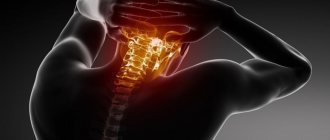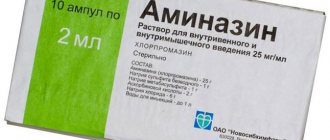When does a migraine from eating occur?
If the working day lasts 12 hours, you are accompanied by constant stress, it would be inappropriate to identify coffee as a product that provokes migraines. There are many causes of headaches, nutrition is not the main one. Factors that provoke headaches: constant stress, weather changes, hunger.
Taking medications in a manner inconsistent with the instructions:
- These could be hormonal and contraceptive drugs, etc.;
- Diseases related to the brain.
- Unhealthy food;
- Dehydration.
Allergic reaction
In the course of scientific work, it was confirmed that patients suffering from various types of allergic reactions are susceptible to migraines. Scientists are ready to subscribe to this conclusion. They also link migraine, an allergic symptom, to fatigue.
When allergies occur, the body’s protective functions contribute to the production of formed elements that increase the lumen of veins and arteries. This can provoke an acute headache, a condition called cerebral hypertrophy .
To this day, experts have not been able to reach a consensus on the causes of migraine. But it is a proven fact that food can provoke and aggravate an attack. This list includes: alcoholic drinks, cheese, chocolate.
A person may not be allergic to the above components. Therefore, experts say that people with migraines do not need to take tests.
Doctors often recommend watching your diet and sticking to a certain diet, which can provoke attacks of pain. When the human body does not receive enough nutrients, disorders begin to occur, which become a consequence of migraine.
What is forbidden to eat?
These include:
- smoked meat and fish;
- alcohol, especially beer, red wine;
- fatty pork meat;
- nuts, beans;
- offal (for example, brains, kidneys, heart);
- salami sausage;
- jerky.
The patient must also exclude:
- various cheeses, especially aged ones (this can be Roquefort, Brie, cheddar);
- fish caviar;
- citrus fruits (oranges, lemons, pineapples, avocados, etc.).
- fermented bean curd;
- sauerkraut;
- kvass, brewer's yeast.
The nutrition of a person suffering from migraine should be aimed at eliminating headaches and other unpleasant symptoms. Therefore, it is worth limiting the use of:
- jellied meat, meat broths;
- jellied fish and meat dishes;
- radishes, horseradish;
- mustard, onion and garlic;
- heavy cream, sour cream;
- sausages, small sausages and frankfurters.
Caffeine Products
Often, products that contain caffeine are provocateurs of the disease, so their consumption is reduced to the maximum. This group includes:
- coffee;
- energetic drinks;
- tea (black, green);
- Coca-Cola drink;
- chocolate, cocoa.
Note that there are cases when a drink such as coffee, on the contrary, helps to overcome migraine attacks (only at the very beginning of its occurrence).
Symptoms
Let's list the main ones:
- During the prodrome, when a migraine attack just begins, a person may experience general weakness, as well as the inability to concentrate on one thing.
- It is important to understand the nature of such headaches. The attack occurs in one part of the head, the pain is pressing, throbbing and severe.
- Initially, the pain affects only the temples and gradually moves to the forehead and eyes.
In this case, a severe headache can begin from the back of the head and from there spread to the other side. Pain may worsen when turning your head and even while walking.
Migraines can affect any area and periodically move from one part to another. A person may experience nausea, vomiting, and irritation to bright lights and loud noises.
General rules
Both the right foods and the right diet have a positive impact on your health.
Proper nutrition for headaches means permitted and prohibited foods, as well as the method of taking them and their compatibility with each other.
Compliance with the time for eating is also of great importance, otherwise even the recommended products will not bring benefits to the body.
What are the principles of proper nutrition? It can be used for preventive purposes and can be used to reduce a series of attacks. In addition, if you eat right, you can also reduce pain, and the attack will last less time.
To do this, you need to follow the principles of proper nutrition and give up unhealthy foods.
- It is strictly not recommended to take long gaps between meals.
Due to the long interval between meals, a feeling of hunger usually appears, and this, in turn, can cause migraines. You need to eat three or four times a day. If you feel hungry, you need to have a snack in addition to your main meals. - Overeating is highly undesirable.
Even if you overeat healthy foods, it can lead to negative consequences. You should avoid fatty and fried foods, as well as confectionery and marinades. There is no need to rush to try unfamiliar exotic dishes, because... it is impossible to say for sure that they will not provoke an attack. - There is no universal diet.
Those products that are suitable for one patient may not be suitable for another. You should always rely not only on the doctor’s recommendation, but also on personal observations. Thus, you can avoid harming yourself by eating a forbidden dish, but the right food may cause a migraine attack.
Did you know that by giving up certain foods, you can forget about migraine attacks? foods that cause migraines are listed.
Foods and drinks that cause headaches
Strong changes in the human body can be provoked by ordinary food. There is no exact list of foods that can cause migraines. Anyone affected by this problem should eliminate certain foods from regular consumption. You can significantly improve your health if you eliminate the following foods from your diet:
Flavor enhancer, dyes . They affect vascular tone, impair blood circulation, so the nervous system does not receive enough blood and oxygen.
Cold food . Temperature changes in the body have a negative effect, for example, ice cream or cold drinks. You don’t have to completely limit yourself, you just need to keep your consumption to a minimum.
Alcohol . Alcohol increases blood circulation; if you exceed the permissible limit, there will be a strong strain on the heart.
Tyramine is a component of many cheeses and has a toxic effect on the body. Contributes to the deterioration of the general condition. If too much tyramine enters the circulatory system, it will cause increased blood pressure, migraines and have a detrimental effect on the central nervous system.
The alkaloid is present in almost all fermented foods, such as:
- Processed cheese.
- Dairy products with mold.
The most harmful of this group are Gouda and Parmesan cheese. They contain phenethylamine in large quantities; this substance is classified as a narcotic that can cause mental disorders. Phenethylamine also affects the development of mental abilities and normal perception of the world around us. There is another group of products:
- Seafood.
- Citrus fruit.
They contain histamine, which causes swelling, changes blood consistency and lowers blood pressure. Once in the human nervous system, it provokes severe pain. They actively affect receptors, causing stomach discomfort and headaches.
It is impossible to exclude all the products presented from your food list; reducing their consumption is quite reasonable.
What not to eat
So which foods are at risk? According to studies conducted by scientists, it has been found that allergenic foods can cause migraine attacks in a person, and accordingly, such foods are undesirable for consumption if you are prone to migraines. Such products include:
- wheat based products
- citrus
- eggs
- red meat (beef)
- corn
- sugar made from cane
- some types of mushrooms
- legumes
In addition, “harmful” products include anything that contains food additives and dyes, in particular: aspartame, sodium nitrate and monosodium glutamate. Accordingly, if we consider that monosodium glutamate and some dyes are contained in every second product, can we conclude that almost any product or product is prohibited? Theoretically, this is true, but it is not easy to completely give up everything and conduct tests with your body. For example, if you have never noticed before that smoked cheese causes headaches, this is not a reason to refuse this product, and vice versa, if Brie cheese provokes a headache, consider replacing it with another type. Explore, try.
You should know that monosodium glutamate is widely used in the preparation of Chinese dishes, which is why there is such a thing as Chinese restaurant syndrome. Don't be surprised if you get a headache after going to such an establishment. The food is to blame for this, but not the atmosphere or stuffiness (although it is possible that everything is in combination).
To increase the shelf life of products, nitrites and nitrates are used. However, these substances, when entering the human body, can cause a decrease in the tone of blood vessels, which, in turn, can have a provoking effect on headaches. Accordingly, the use of foods with a long shelf life is not recommended for sick people.
In addition, the following products are at risk:
- nuts;
- potato chips;
- pizza;
- chicken by-products;
- smoked red fish;
- dried fish;
- fresh bakery;
- smoked meats;
- dried fruits;
- yogurt;
- oil;
- sour cream;
- caffeinated products;
- desserts with cheese;
- crackers with cheese flavor;
- bananas;
- papaya;
- a pineapple;
- kiwi.
In adults with migraines, attacks may be caused by the accumulation of substances such as phenylethylamine and aspartame in the body.
Phenylethylamine is a narcotic substance and can accumulate gradually in the body as a result of regular consumption of the following products:
- chocolate;
- cheesecake;
- citrus;
- berries;
- red wine;
- yellow cheese.
In turn, aspartame, when accumulated, also provokes the body to headaches. It contains:
- sparkling water;
- some lollipops;
- yogurt;
- ketchup;
- cookie.
One of the most dangerous substances, which in large quantities can lead not only to headaches, but also cause ailments such as edema, hypotension, and blood thickening, is histamine.
Histamine enters the body along with the following products:
- meat-containing products (sausages, sausages, etc.);
- seafood;
- sea fish;
- bananas;
- pineapples;
- citrus;
- yeast products;
- eggplant;
- spinach;
- chocolate.
Products that cause migraines are widely sold in any supermarket and some of them are among those consumed daily. As mentioned earlier, the best test is to assess your body’s reaction to a particular product. Make it a rule to write down all your feelings after consuming this or that “dangerous product”, and very soon an obvious picture will emerge, and you will know what you can eat from the prohibited list and what you cannot eat.
Do not forget that diet is also a provoking factor, since excessive malnutrition can cause the body to starve. During fasting, your brain triggers processes associated with maintaining vital functions, as a result of which the body produces substances that are “forbidden”, from the point of view of migraines. These substances cause headaches.
Another enemy in the fight against migraines is chilled foods. So, as a result of observations by scientists, it was found that products such as ice cream, frozen fruit, etc. can influence the nature and intensity of attacks. People who have experienced headache attacks are overly susceptible to temperature changes.
As for cheeses, the most harmful for patients are Brie cheese, mozzarella cheese, Cheddar cheese, and blue cheeses. They contain large amounts of tyramine.
In addition, this substance is found in foods such as garlic, olives, nuts and legumes.
Healthy eating
Irregular use and long pauses between meals provoke attacks of acute headaches. When the level of sugar in the central nervous system is reduced, this becomes a consequence of migraine. You need to monitor the condition of your body as a whole. For persistent migraines, doctors recommend:
- Eat food more often, but in small portions.
- Drink sufficient fluids.
- Eat whole grain foods enriched with proteins and healthy fiber. Thanks to these products, glucose levels are normalized and food digestion slows down.
- It is recommended to lead a healthy lifestyle.
- Walks in the open air.
- Full sleep.
- Be less stressed.
Treatment
The main method of treating migraine is diet therapy.
In addition to diet therapy, it is necessary to consume vitamin and mineral complexes to prevent brain hypoxia, regulate vascular tone and strengthen the immune system.
Excessive fluid intake helps dissolve toxic substances that form in the blood during any inflammatory processes.
Headache attacks respond well to treatment with a “targeted” diet.
This nutrition helps improve the elimination and assimilation of foods. This method consists of two points:
- Option A includes fish protein and four prebiotics.
- Option “B” has many ingredients, including liver, spleen, parsley, dandelion, milk thistle, etc.
The first option has a beneficial effect on the nutrition of brain cells, and the second is needed to restore the functions of the urinary organs. Thanks to this complex, antioxidant and detoxification regimes are improved.
Additional details of a balanced diet for headaches:
- Low fat mode. According to this regimen, the fat content in the daily diet is reduced to thirty grams. With such a diet, the likelihood of migraine attacks is significantly reduced.
- Ketogenic diet. This diet is necessary to reduce the amount of ketoacidosis in the blood (it usually occurs in people with diabetes),
- The Agliadin diet is recommended if you have celiac migraine.
If you take migraine prevention measures, you can greatly reduce the number of attacks. , read carefully.
How to relieve a migraine attack quickly and what to do if the pain does not go away? Read useful information on this topic.
Rationalization of nutrition is a special procedure that can help you get rid of migraines that arise due to the action of food triggers.
Dangerous drinks
If you are prone to severe headaches, drinks containing aspartame should be completely avoided. These include: sparkling water, alcohol, juices. Wine and beer, along with other drinks, are more likely to provoke migraines than other drinks containing aspartame. Beer and wine provoke the fermentation process in the stomach.
It is necessary to be careful when drinking coffee , the drink narrows dilated blood vessels, so it is often used in the manufacture of medicines. Coffee increases symptoms due to increased blood pressure if consumed in large quantities. When a patient who constantly drinks coffee abruptly gives it up, this will provoke headaches.
Alcohol-containing liquid contains a high concentration of histamine and teramine, which also provoke migraines. Therefore, people suffering from headaches should avoid drinking alcohol, which will provoke attacks.
After drinking alcohol, a person’s blood circulation increases, it increases in the vessels of the brain. For example, after drinking wine, blood flow in the brain increases, nerve endings are excited, resulting in a migraine. Harmful components that are part of low-alcohol drinks also affect the appearance of headaches.
What foods need to be limited for migraines?
Some foods are allowed to be consumed for migraines only in small quantities, while observing your own reaction to them. So you need to be very careful with:
- boiled sausages, wieners, frankfurters and ham;
- fatty dairy products;
- yeast baked goods and fresh bread;
- mustard, horseradish, garlic and onion;
- exotic fruits;
- fish dishes, meat broths.
On a note! Products containing caffeine (black or green tea, coffee, chocolate, energy drinks, cola) often provoke migraine attacks, so they should be consumed quite limited. But in rare cases, you can relieve an attack at the initial stage by consuming small amounts of caffeine-containing products.
Other causes of migraine
Let's list the main ones:
- effect on the trigeminal nerves.
- a short-term spasm of the branches of the carotid artery appears lasting up to 45 minutes.
- the vessels gradually resist, the walls vibrate.
- swelling of the brain tissue occurs, arterial tone deteriorates, and blood is directed into the venous system.
When the aura begins, platelet aggregation occurs. This process is necessary to ensure the integrity of the blood vessels. A large amount of serotonin is produced. As a result, the blood vessels in the head narrow.
As a result, we can say that the list of products that provoke migraines is extensive. There is no need to dramatically change your usual diet and lifestyle by giving up the above products. Basically, it is always enough to reduce the consumption of such foods; after this, your health will improve significantly. Eat only healthy foods and take care of yourself!
Healthy foods
For supporters of a healthy lifestyle, following the rules of a therapeutic diet will not be difficult. Many of the components listed above are not very rich in nutrients. Their absence in the diet will affect the general condition of a person in the most favorable way. If the basis of your diet consists of foods that promote the production of serotonin, this will be an additional advantage.
The diet for migraines in children and adults is based on the following products:
- low-fat chilled sea fish;
- vegetable oils – flaxseed, corn, olive, sunflower;
- foods rich in magnesium - dried fruits, bran, seaweed;
- brown rice;
- buckwheat and oatmeal;
- vegetable broths;
- foods rich in B vitamins - baked potatoes, fresh green vegetables, sunflower seeds, melons, dates, cereals (except semolina);
- lean poultry and rabbit meat – freezing of components is undesirable, preference is given to chilled products;
- stewed or steamed bright vegetables, provided they are well tolerated;
- low-fat fermented milk products without additives, dyes, or flavor enhancers;
- ginger - daily consumption of 1 g of fresh or dry root in pure form or as part of tea significantly reduces the frequency of attacks;
- fresh or baked apples, pears, peaches, figs.
In addition to the listed migraine products, the daily menu should include a sufficient amount of liquid. These can be herbal teas, still water, fruit drinks or compotes. If tolerated well, it is recommended to drink freshly squeezed juices from grapes, cucumbers, celery, beets, and carrots daily.
Read about how you can quickly relieve an attack of pain here.
List of permitted products
| Vegetables and greens (eggplant, zucchini, cabbage, broccoli, Brussels sprouts, cauliflower, green onions, cucumbers, squash, parsley, lettuce, celery, asparagus, Jerusalem artichoke, dill) |
| Fruits (pears, nectarines, peaches, apples) |
| Berries (gooseberries, black currants) |
| Nuts and dried fruits (raisins, flax seeds, sunflower seeds) |
| Cereals and porridges (buckwheat (kernels), oatmeal, oat flakes, wheat bran) |
| Flour and pasta (Pasta) |
| Raw materials and seasonings (Basil) |
| Dairy products (fermented milk products, kefir 0%, kefir 1%) |
| Cheeses and cottage cheese (brynza cheese (from cow's milk), amber processed cheese, cottage cheese 0.6% (low-fat)) |
| Poultry (boiled chicken, steamed chicken breast) |
| Fish and seafood (seaweed) |
| Oils and fats (butter, linseed oil, olive oil, sunflower oil) |
| Non-alcoholic drinks (mineral water, instant chicory) |
| Juices and compotes (rosehip juice) |











